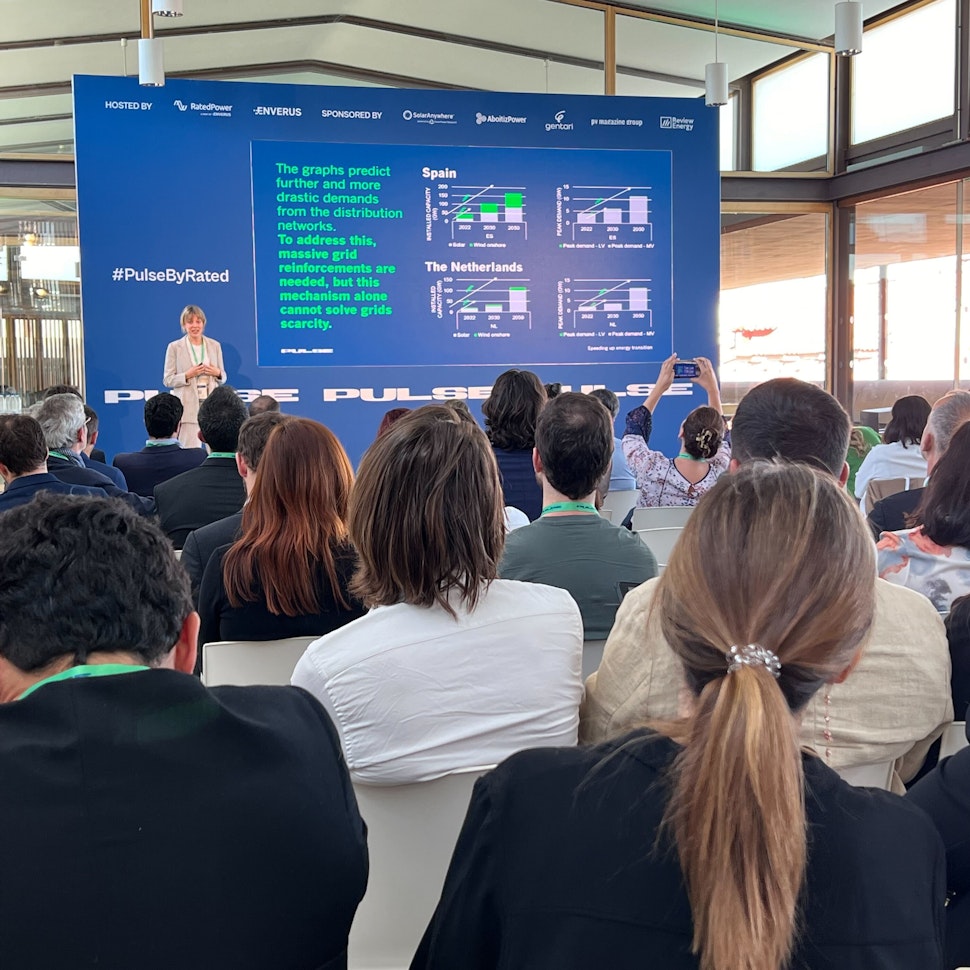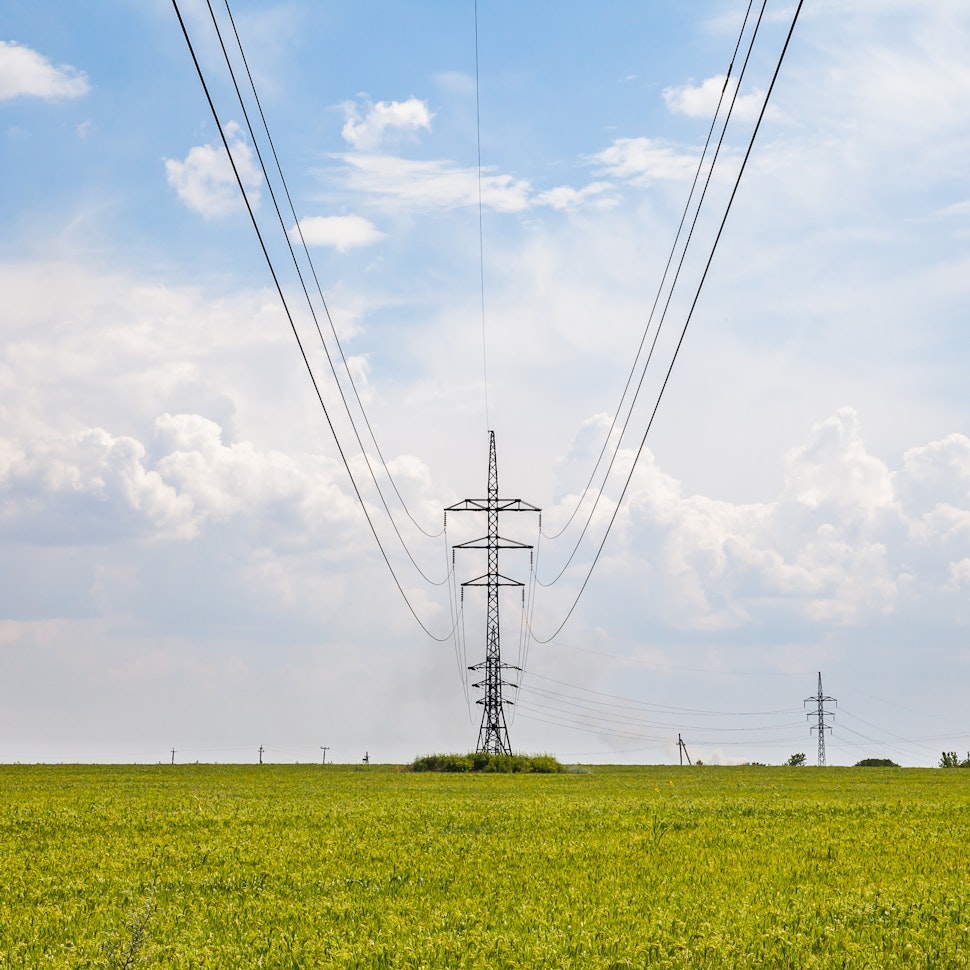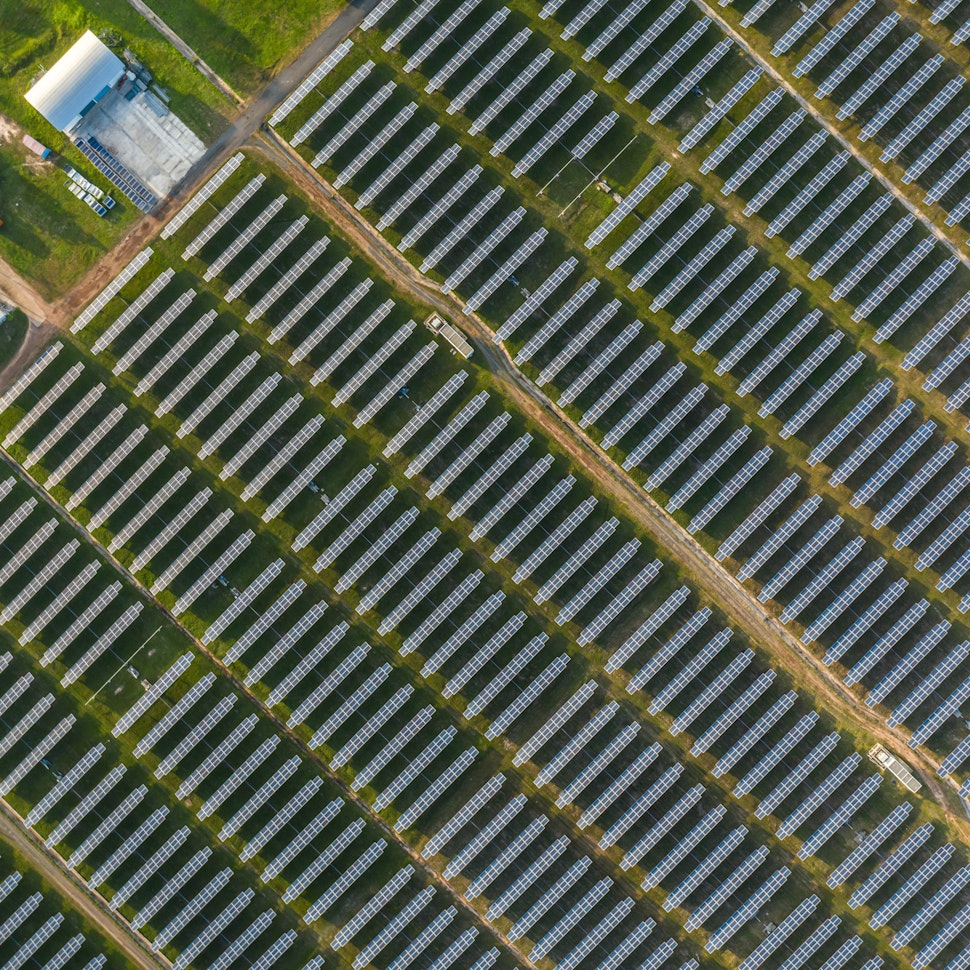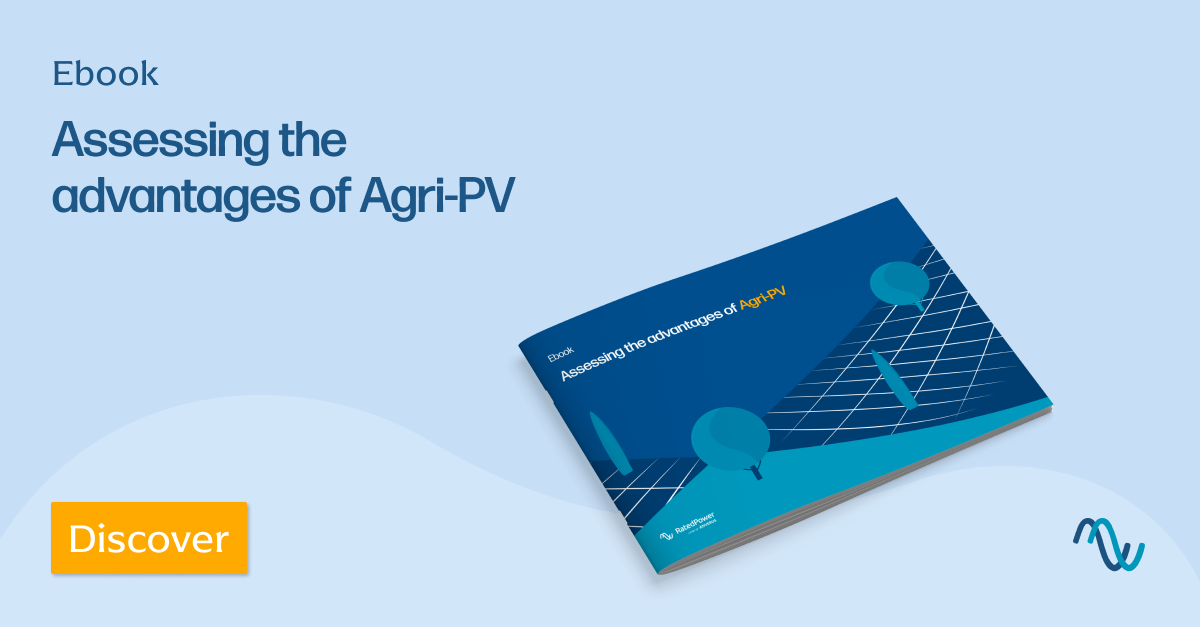- Solar energy blog
- Changing law: Agri PV in France
Changing law: Agri PV in France
As the solar energy industry continues its steady growth, one sub-sector is becoming particularly prominent. Just as agricultural photovoltaics (agri-PV) is gaining traction worldwide, France has introduced new legislation aimed at promoting its adoption within the country.
In this blog, we’ll discuss this exciting technology and what its adoption means for the French solar sector in the future.



What is Agri-PV?
If you’ve never heard of agri-PV, it’s a concept that combines two critically important aspects of sustainability: agriculture and solar energy. Instead of land being used simply for agricultural activities, with agri-PV, the land doubles as a site for harnessing solar power.
To learn more about agrivoltaics and its advantages, check out our ebook.
There are typically two types of installations: interspace PV and overhead PV. The former involves planting crops between rows of spaced-out PV modules, while the latter takes a slightly different approach by installing elevated solar panels above the crops rather than alongside them.
The goal of combining the two is to use the land more efficiently and encourage dual land usage projects, but the benefits go beyond that. The shade provided by interspaced or overhead solar modules reduces irrigation water requirements, leading to lower water consumption and costs. Researchers have described this as “harvesting the power of the sun twice.”
Farmers find agri-PV particularly enticing as it can supplement their income. Not only can they use the electricity generated to power their operations, but they can also sell the surplus energy for a profit. The benefits of using this type of setup are very compelling.
The solar market in France
If we turn our attention to the broader solar market in France, we’ll see some encouraging numbers. As of 2022, France had a solar PV energy capacity of roughly 17 GW, earning it fifth place in Europe for cumulative PV capacity at the time. That number has grown to about 22-23 GW as of early 2024, and estimates predict an increase to nearly double to approximately 44.68 GW by the end of this decade.
Of course, this kind of growth isn’t just good news for improving sustainability. There are also economic benefits. In terms of revenue generation and job creation, the French solar PV sector has made impressive strides, with sales in excess of €8 billion and job opportunities provided to more than 16,000 people.
One of the major driving forces behind this growth has been government policy, which has set ambitious targets. Specifically, goals like producing 32% of France’s total energy from renewables by 2030 have catalyzed progress toward transitioning away from traditional fossil fuels. In addition, the Multi-Annual Energy Program aims for 1,000 solar projects to be built on public land by 2025, with estimates suggesting that this will play a significant role in helping the country meet its 2029 goals.
Interested in France's solar markek? Download the State of Green to explore France’s clean energy landscape, including its solar PV sector. It will assess solar’s role in decarbonization, track deployment progress, highlight policy developments, profile its most significant installations, and look to the future of how France will fulfill its solar potential.
The rise of agri PV in France
In addition to a burgeoning solar industry in general, a significant part of the uprising of agri-PV in France can be attributed to specific legislative measures and policy reforms. Notably, the Renewable Energy Acceleration Act 2023 has been instrumental in this shift. Enacted with a clear vision for an eco-friendly future, it underscores the vital role that agrivoltaics play in the clean energy transition. The Act ambitiously targets a tenfold increase in solar energy production capacity by 2050, aiming to achieve over 100 GW.
This law also provides a specific definition and framework for what constitutes agrivoltaic facilities: those utilizing solar energy on agricultural plots while simultaneously contributing sustainably to agricultural production. It clearly stipulates conditions under which installations can be classified as agrivoltaic, emphasizing two main aspects: preservation of agricultural productivity and environmental protection.
The Act also introduced a new regulatory framework designed to promote the seamless integration of solar panels into agricultural land without compromising the primary objective of food production. By stipulating that agrivoltaic installations must not significantly impair agricultural services, prevent agricultural production from being the main activity, or be non-reversible, the legislation underscores the importance of maintaining agricultural land for its intended purpose first and foremost.

Another component of the rise of agri-PV is land suitability. For the past 15 years, the French government has predominantly supported large-scale solar power installations on degraded lands. However, as suitable sites for these projects become increasingly scarce and environmental concerns grow, the focus has shifted towards more sustainable and integrative solutions. This was one of the driving factors behind the legislation passed in March 2023.
Collaboration between developers is yet another area where agri-PV has benefited. A prime example is the strategic partnership between Sun’Agri and RWE, which focuses on implementing integrated solutions that benefit both agriculture and green electricity production, with a particular emphasis on fruits, vegetables, and wine.
This kind of partnership is exciting not just because of the combined resources but also because of the cutting-edge technology involved. Leveraging over a decade of research, Sun’Agri has developed a patented technology that utilizes mobile solar panels. These panels can be adjusted to control sunlight exposure to crops, thereby mitigating weather-related losses and optimizing agricultural production.
Collaboration and innovation like this are sure to keep the agri-PV sector in France trending upward and help France achieve its green targets.
Ready to revolutionize your solar projects? Try RatedPower and take your PV system to the next level.
Latest stories
Related posts
Market analysis
23 renewable energy events to look out for in 2026
Discover the top renewable energy events in 2026, dates, details, and insights for solar, storage, hydrogen, and clean energy professionals worldwide.
Updated 13 JAN, 26

Market analysis
Power where it’s needed: Solving LatAm’s grid instability with distributed solar and storage
Find out how a bottom-up approach is solving LatAm’s grid instability, with community-led solar and storage projects giving people control over their energy.
Updated 29 DEC, 25

Market analysis
Powering through the peak: Why solar + storage is gaining momentum in MENAT
Discover how MENAT is building a functioning solar economy and why rising peak demand during extreme heat is squeezing its energy architecture.
Updated 11 DEC, 25


- RatedPower
- Solar energy blog
- Changing law: Agri PV in France
 Watch a demo
Watch a demo Ask our AI Product Expert
Ask our AI Product Expert

